?Insetti incontrano Uomini. La collezione entomologica di Pietro Castellano

?Insetti incontrano Uomini. La collezione entomologica di Pietro Castellano, Casa circondariale di Verbania
Dal 10 October 2014 al 31 October 2014
Verbania | Verbano-Cusio-Ossola
Luogo: Casa circondariale di Verbania
Indirizzo: via G.Castelli 8
Enti promotori:
- Regione Piemonte
- Museo Naturale di Scienze Naturali
Telefono per informazioni: 800 329 329
Sito ufficiale: http://www.mrsntorino.it/
Se non erro lei è un entomologo, vero?
“Un titolo troppo ambizioso signore.
Vorrei poter conoscere un uomo che ne sia degno. Nessuno può in verità dirsi un entomologo, signore. L’argomento è troppo vasto perché l’intelletto umano possa da solo contemplarlo tutto”.
Oliver Wendell Holmes
“Il poeta a colazione”
Le vite degli insetti e quelle degli uomini si incrociano di continuo, praticamente ovunque, e se escludiamo quelli con le farfalle, quasi mai questi incontri suscitano in noi grande entusiasmo. Eppure, se li si osserva, magari con l’aiuto di una lente, si scopre che tutti hanno un particolare fascino legato certamente alla varietà di colori e di forme, ma anche alle strane abitudini di vita e, in alcuni casi, a straordinari esempi di organizzazione sociale, come nel caso delle api e delle formiche.
In alcune zone del Sud del mondo, soprattutto ai Tropici, vivono insetti davvero spettacolari, alcuni dei quali sono esposti in questo allestimento.
Sono gli abitanti delle foreste che parlano di posti lontani, ma che possono aiutare a vedere anche le specie nostrane meno appariscenti con uno sguardo diverso.
Si sono volutamente conservate le confezioni originali, sia per quanto riguarda le acquisizioni e preparazioni di terzi, sia per quelle effettuate dallo stesso Castellano, tranne nei casi in cui un importante deperimento delle scatole o una conservazione inadeguata hanno richiesto la ricollocazione degli insetti in modalità più sicure.
La maggior parte di questo materiale è stato infatti acquistato dal collezionista nel corso degli anni, già preparato e commercializzato da aziende che operano nel settore.
Gli esemplari esposti appartengono soprattutto agli ordini Coleoptera e Lepidoptera, ma ci sono anche alcuni rappresentanti
degli ordini Orthoptera, Phasmatodea, Megaloptera, Hemiptera, Hymenoptera. Pietro Castellano, nasce a Torre Pellice, un piccolo comune piemontese, il 6 luglio del 1923 e si spegne il 15 dicembre 2010 a Torino, a 86 anni, dopo un brevissimo ricovero in ospedale.
Pietro cresce con il padre e con la zia, la madre invece era morta durante la seconda guerra mondiale. Il suo percorso di studi si ferma alla quinta elementare ma, sebbene per tutta la vita Pietro faccia il magazziniere, insegue il sapere in tutte le sue forme. Colleziona conchiglie, insetti, libri, oggettistica di vario genere, si interessa alla fotografia e si dedica alle scienze, soprattutto all’astronomia. Scapolo, di carattere gioviale ed entusiasta, da buon bogianen* non ama viaggiare, ma esplora il mondo con la fantasia attraverso una quantità infinita di videocassette e documentari.
Si circonda di oggetti e libri che riempiono progressivamente la casa trasformandola in un luogo quasi inaccessibile agli estranei. Sebbene fosse geloso delle sue collezioni, Castellano ha sempre desiderato che anche “altri” le potessero vedere e apprezzare, per condividere le sue passioni per le tante cose belle del mondo.
Alla sua morte, la collezione entomologica viene donata al Museo Regionale di Scienze Naturali.
Testimonianza della bellezza della natura, la raccolta inizia ora a viaggiare per catturare la fantasia degli spettatori e trasformarla in interesse scientifico.
“Un titolo troppo ambizioso signore.
Vorrei poter conoscere un uomo che ne sia degno. Nessuno può in verità dirsi un entomologo, signore. L’argomento è troppo vasto perché l’intelletto umano possa da solo contemplarlo tutto”.
Oliver Wendell Holmes
“Il poeta a colazione”
Le vite degli insetti e quelle degli uomini si incrociano di continuo, praticamente ovunque, e se escludiamo quelli con le farfalle, quasi mai questi incontri suscitano in noi grande entusiasmo. Eppure, se li si osserva, magari con l’aiuto di una lente, si scopre che tutti hanno un particolare fascino legato certamente alla varietà di colori e di forme, ma anche alle strane abitudini di vita e, in alcuni casi, a straordinari esempi di organizzazione sociale, come nel caso delle api e delle formiche.
In alcune zone del Sud del mondo, soprattutto ai Tropici, vivono insetti davvero spettacolari, alcuni dei quali sono esposti in questo allestimento.
Sono gli abitanti delle foreste che parlano di posti lontani, ma che possono aiutare a vedere anche le specie nostrane meno appariscenti con uno sguardo diverso.
Si sono volutamente conservate le confezioni originali, sia per quanto riguarda le acquisizioni e preparazioni di terzi, sia per quelle effettuate dallo stesso Castellano, tranne nei casi in cui un importante deperimento delle scatole o una conservazione inadeguata hanno richiesto la ricollocazione degli insetti in modalità più sicure.
La maggior parte di questo materiale è stato infatti acquistato dal collezionista nel corso degli anni, già preparato e commercializzato da aziende che operano nel settore.
Gli esemplari esposti appartengono soprattutto agli ordini Coleoptera e Lepidoptera, ma ci sono anche alcuni rappresentanti
degli ordini Orthoptera, Phasmatodea, Megaloptera, Hemiptera, Hymenoptera. Pietro Castellano, nasce a Torre Pellice, un piccolo comune piemontese, il 6 luglio del 1923 e si spegne il 15 dicembre 2010 a Torino, a 86 anni, dopo un brevissimo ricovero in ospedale.
Pietro cresce con il padre e con la zia, la madre invece era morta durante la seconda guerra mondiale. Il suo percorso di studi si ferma alla quinta elementare ma, sebbene per tutta la vita Pietro faccia il magazziniere, insegue il sapere in tutte le sue forme. Colleziona conchiglie, insetti, libri, oggettistica di vario genere, si interessa alla fotografia e si dedica alle scienze, soprattutto all’astronomia. Scapolo, di carattere gioviale ed entusiasta, da buon bogianen* non ama viaggiare, ma esplora il mondo con la fantasia attraverso una quantità infinita di videocassette e documentari.
Si circonda di oggetti e libri che riempiono progressivamente la casa trasformandola in un luogo quasi inaccessibile agli estranei. Sebbene fosse geloso delle sue collezioni, Castellano ha sempre desiderato che anche “altri” le potessero vedere e apprezzare, per condividere le sue passioni per le tante cose belle del mondo.
Alla sua morte, la collezione entomologica viene donata al Museo Regionale di Scienze Naturali.
Testimonianza della bellezza della natura, la raccolta inizia ora a viaggiare per catturare la fantasia degli spettatori e trasformarla in interesse scientifico.
SCARICA IL COMUNICATO IN PDF
COMMENTI

-
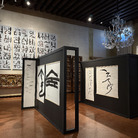 Dal 8 November 2025 al 11 January 2026
Venezia | Museo Correr
Dal 8 November 2025 al 11 January 2026
Venezia | Museo Correr
CARATTERI. Calligrafia e tipografia: Corea del Sud e Stati Uniti
-
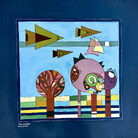 Dal 8 November 2025 al 22 February 2026
Brescia | Museo di Santa Giulia
Dal 8 November 2025 al 22 February 2026
Brescia | Museo di Santa Giulia
Material for an Exhibition. Storie, memorie e lotte dalla Palestina e dal Mediterraneo
-
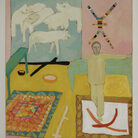 Dal 8 November 2025 al 18 January 2026
Perugia | Perugia, Spoleto e Gubbio
Dal 8 November 2025 al 18 January 2026
Perugia | Perugia, Spoleto e Gubbio
Mimmo Paladino. Antologica
-
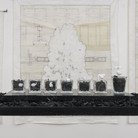 Dal 7 November 2025 al 25 January 2026
Roma | Museo Carlo Bilotti Aranciera di Villa Borghese
Dal 7 November 2025 al 25 January 2026
Roma | Museo Carlo Bilotti Aranciera di Villa Borghese
Silvia Scaringella. Deus sive natura
-
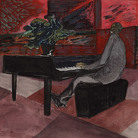 Dal 5 November 2025 al 1 March 2026
Asti | Palazzo Mazzetti
Dal 5 November 2025 al 1 March 2026
Asti | Palazzo Mazzetti
PAOLO CONTE. Original
-
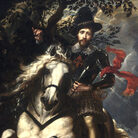 Dal 28 October 2025 al 15 February 2026
Brescia | Pinacoteca Tosio Martinengo
Dal 28 October 2025 al 15 February 2026
Brescia | Pinacoteca Tosio Martinengo
Peter Paul Rubens. Giovan Carlo Doria a cavallo


